
Next Thing Co. CHIP and PocketCHIP Review
Manufacturer: Next Thing Co.UK price (as reviewed): PocketCHIP: Approx. £73 (inc VAT); CHIP: £12 (inc VAT)
US price (as reviewed): PocketCHIP: $69 (ex Tax); CHIP: $9 (ex Tax)
The popularity of the Raspberry Pi since its launch four years ago has, naturally, spurred on a number of imitators, copycats, and would-be successors. Many of these boast higher specifications and lower pricing, but the CHIP hit Kickstarter with the promise of both: a more powerful single-board computer costing just $9 (around £7, excluding VAT). The project's crowdfunding campaign proved successful, despite concerns that its pricing would be unsustainable, and with all backer pledges now fulfilled creator Next Thing Co. is turning to mass production with full availability scheduled for November.
Based around the AllWinner R8 system-on-chip (SoC) processor, the CHIP packs a single ARM Cortex-A8 central processor running at 1GHz sitting alongside an ARM Mali 400 graphics processor. Both share the 512MB of DDR3 memory attached to the board, giving the CHIP specifications roughly matching the £4 Broadcom BCM2835-based Raspberry Pi Zero. For the extra outlay, you get plenty of bonus features: a piggyback radio module gives the CHIP Bluetooth 4.0 and 802.11b/g/n Wi-Fi connectivity, albeit only in the 2.4GHz spectrum; there's 4GB of onboard storage; and its general-purpose input-output (GPIO) headers span both sides of the board with a total of 80 pins.
There are losses, too: the CHIP has no easily accessible digital video or audio output, instead relying upon a 3.5mm jack which offers TRRS (tip-ring-ring-sleeve) connectivity for analogue stereo audio and composite video; there's no wired network port, as with the larger Raspberry Pi Model B and upwards; there's also no micro-SD slot, so storage expansion eats up the sole USB port. Like the Pi Zero, there's also a definite feeling of being nickel-and-dimed to hit the headline-grabbing $9 price point of the Kickstarter campaign: a TRRS cable for audio and video, a necessity for all but headless use, adds $5 to your order, while add-on boards for VGA or HDMI outputs add $10 and $15 respectively sans cables.
It's near-impossible to review the CHIP without making direct comparisons to the Raspberry Pi, and entirely fair to say that if the latter didn't exist neither would the former. With its single-core processor the CHIP has more in common with the Pi Zero and Model A+ than the later quad-core models, but enjoys the benefit of mostly improved performance. A SysBench CPU test completion time of 304.55 seconds puts the CHIP comfortably ahead of the Pi Zero's 349.43 seconds, while a Dhrystone score of 1,850.9 MIPS compares favourably to the Pi Zero's 1,237.3 MIPS. Floating-point performance, though, is a notable exception: the CHIP scores just 188.4 MWIPS in the Whetstone benchmark, while the Pi Zero pushes a significantly meatier 340.5 MWIPS.
The strange drop in floating-point performance seems to stem from as yet unpolished software. The Debian-based Linux distribution supplied preloaded on the CHIP's internal storage is definitely unoptimised, treating the Cortex-A8 processor as an older Cortex-A7 - complete with ignorance of the NEON SIMD engine which gives the Raspberry Pi 2 and Pi 3 such an impressive performance boost over their predecessors. These issues extend, too, to the otherwise promising 80-pin GPIO capabilities of the device: control of the GPIO pins outside the terminal is provided exclusively through third-party libraries with extremely variable performance. A Python program written to toggle a single pin constantly wavered between 400Hz and 2.3KHz, where a Pi Zero - despite also being single-core - is more than up to the task of running the same program at 88.5KHz with no fluctuation.
Specifications:
- CPU: 1GHz Single-Core AllWinner R8 ARM Cortex-A8
- GPU: ARM Mali 400
- RAM: 512MB DDR3
- Storage: 4GB eMMC
- Networking: 2.4GHz 802.11b/g/n Wi-Fi, Bluetooth 4.0
- Ports: 1x USB, Analogue TRRS AV, 2x 40-pin GPIO (1x 25-pin on PocketCHIP)
- Display (PocketCHIP): 4.25in, 480 x 272 backlit resistive touch LCD
- Size (CHIP) (mm): 62.9 x 41.3 x 14.8
- Weight (CHIP): 30g
- Size (PocketCHIP) (mm): 112.5 x 165.1 x 26.2
- Weight (PocketCHIP): 267g

MSI MPG Velox 100R Chassis Review
October 14 2021 | 15:04

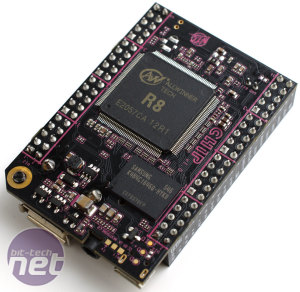
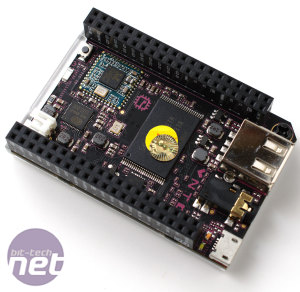
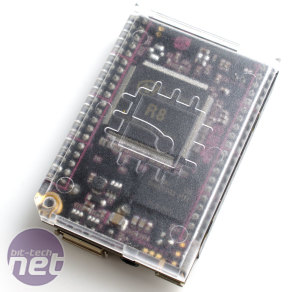

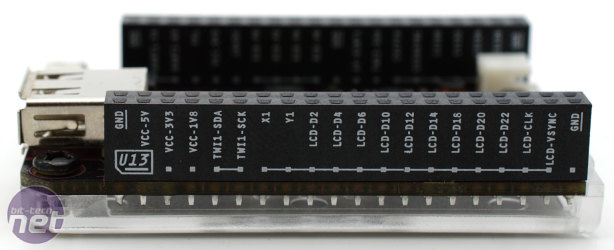
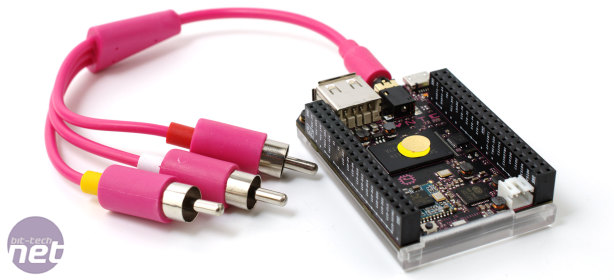
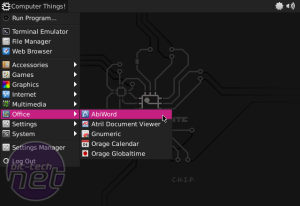








Want to comment? Please log in.